
Trucks, tanks, and more!
There are a number of vehicles the OSD team comes across during their adventures in Devil in the Desert. I did a lot of research to pick specific types that would be historically accurate to the time period. Not wanting all that research and fun facts to go to waste, I’ll share them with you here.
German Army Kubelwagen
Americans had the Jeep. The Germans has a Kubelwagen.
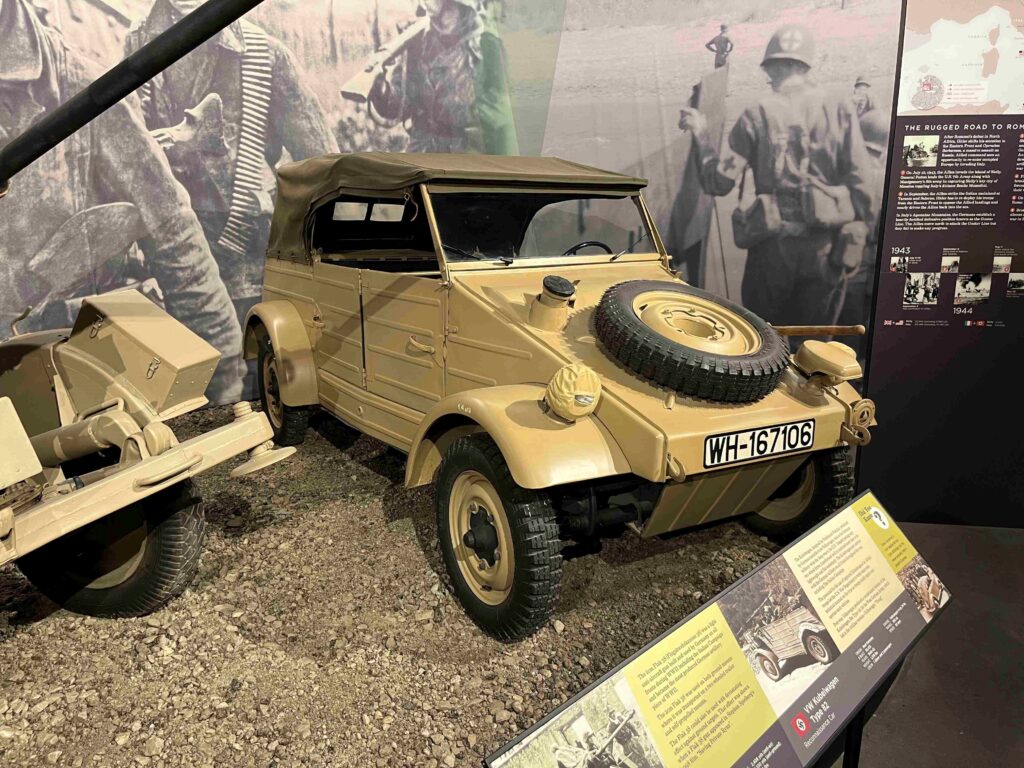
Ferdinand Porsche, future-father of the 911 sports car, designed this inexpensive, lightweight military transport vehicle in 1938. The Volkswagen Beetle, a promised “people’s car” that the war put on hold provided the basis. Unlike the Jeep, this was only two-wheel- drive, but it still proved tough to get stuck, even with only a 985 cc engine.
Full-scale production of the Type 82 Kübelwagen started in February 1940 and continued with only minor changes all the way until 1945. By then 50,435 Kübelwagen vehicles had been produced. Only small modifications were implemented, mostly eliminating unnecessary parts and reinforcing others which had proved unequal to the task. Prototype versions were assembled with four-wheel-drive (Type 86) and different engines, but none offered a significant increase in performance or capability over the existing Type 82, so these designs went nowhere.
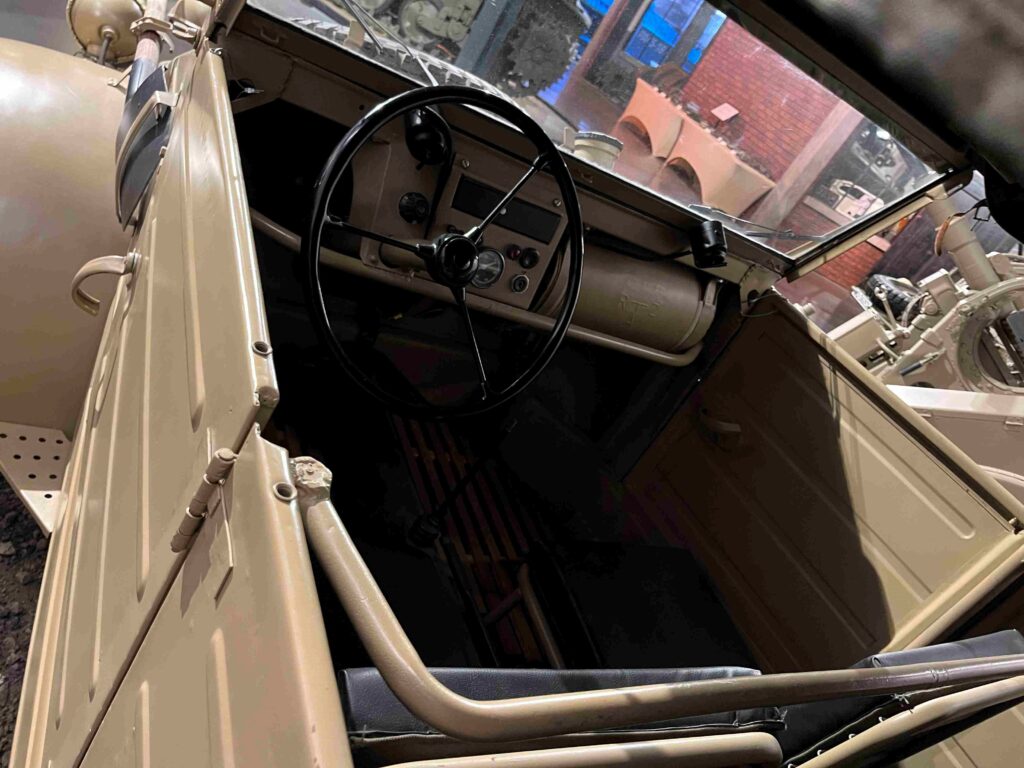
This interior picture show how utilitarian the interior was, and that the body was anything but bulletproof. But it had more room and more protection from the elements that the Jeep. In fact, it was captured and re-used by so many Allied soldiers that the U.S. Army even made a field manual for its troops so they could repair and maintain one correctly.
M3 “Lee” Medium Battle Tank
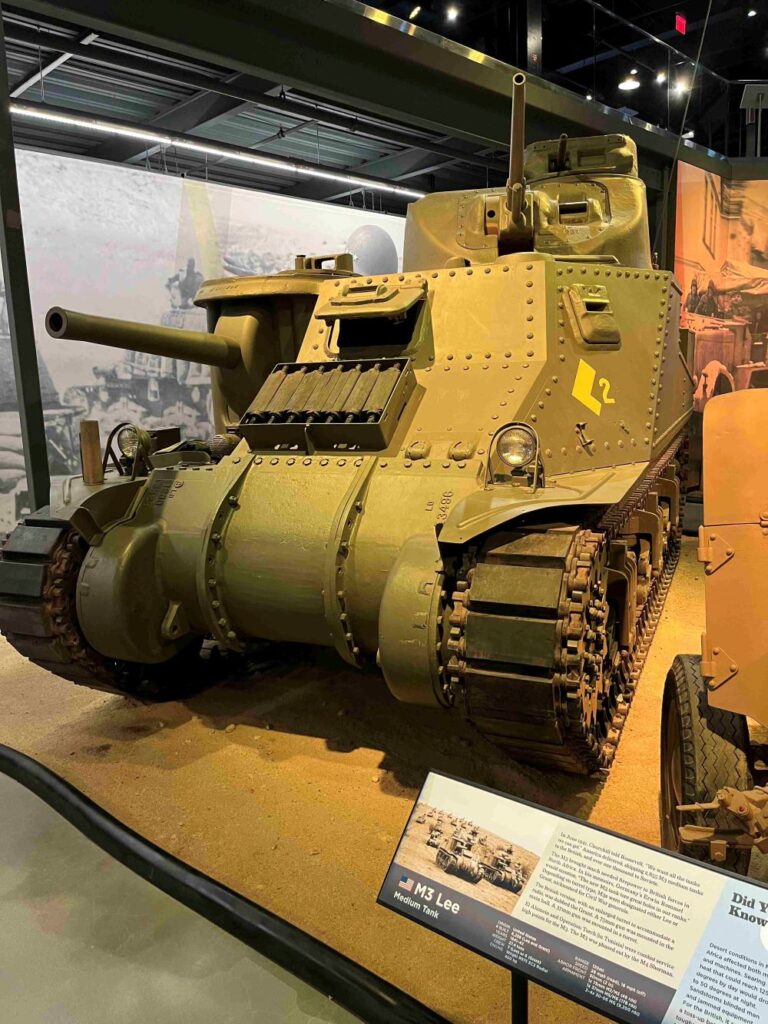
As entering World War II looked inevitable, American armor dated from the last big war and was hopelessly obsolete. The stopgap answer was the M3 Lee, officially Medium Tank, M3. It carried a 75 mm main gun mounted in the tank body, and a smaller cannon in the turret. It was relatively easy to build, relatively inexpensive ($55,000), and the main gun packed a decent punch against the armor rolling when it was first deployed in 1941.
But the design had some serious drawbacks. First, unlike every other tank in WWII, the main gun wasn’t in the turret. That meant you needed to spin the entire tank to aim the gun. There was a reason no other army had tanks like this. Other drawbacks included a high silhouette, the inability to take a hull-down firing position, riveted construction that could send popped rivets into the crew area when an enemy round hit, and poor off-road performance. But until the superior M4 Shermans arrived, this was all the Americans had. Production ended in 1942 after making 6,258 of them.
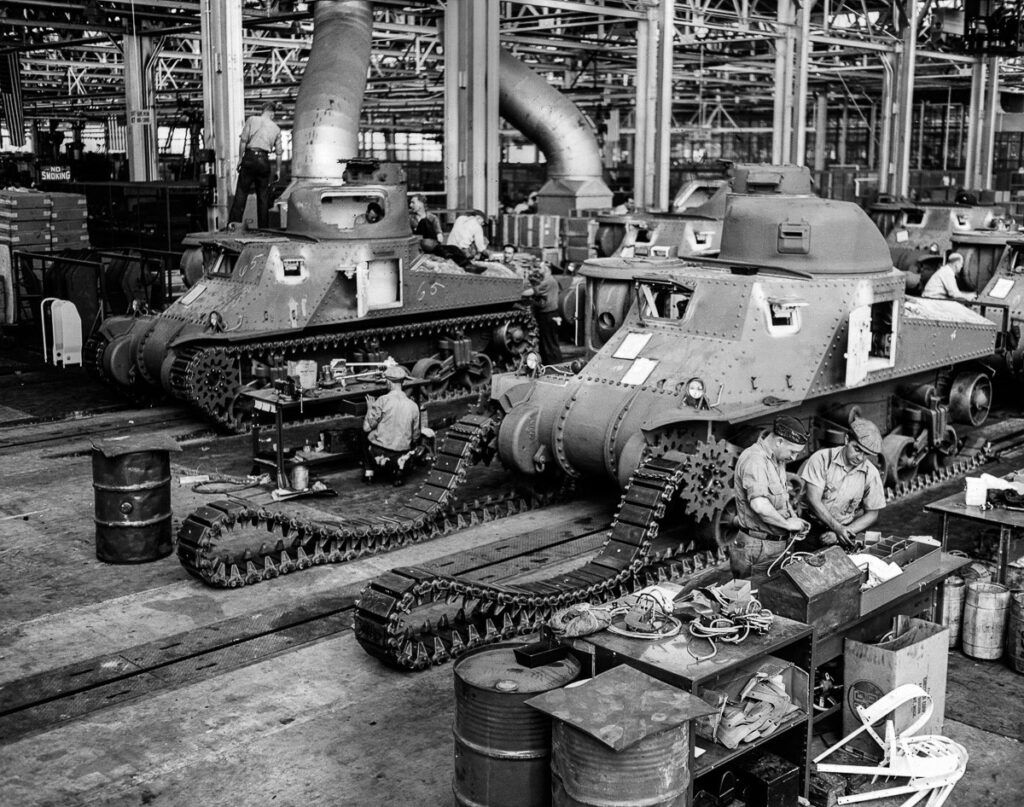
The turret was produced in two forms, one with the main gun on the right, like the picture for American standards, and one with the main gun on the left for British requirements. American tanks were called “Lee,” named after Confederate general Robert E. Lee, British tanks were known as “Grant,” named after Union general Ulysses S. Grant. Nearly a thousand M3s were supplied to the Soviet military under Lend-Lease between 1941 and 1943.
In the Pacific, where it was a match for the lighter Japanese Army tanks, the M3 did soldier on until 1945.
Opel Blitz Kfz 305 Ambulance
The OSD is not above using captured vehicles to get around, especially since masquerading as the 417th Medical Holding Battalion on paper, they can’t very well requisition one without getting unwanted attention. One of the vehicles they use is a German Army Opel Blitz Ambulance.
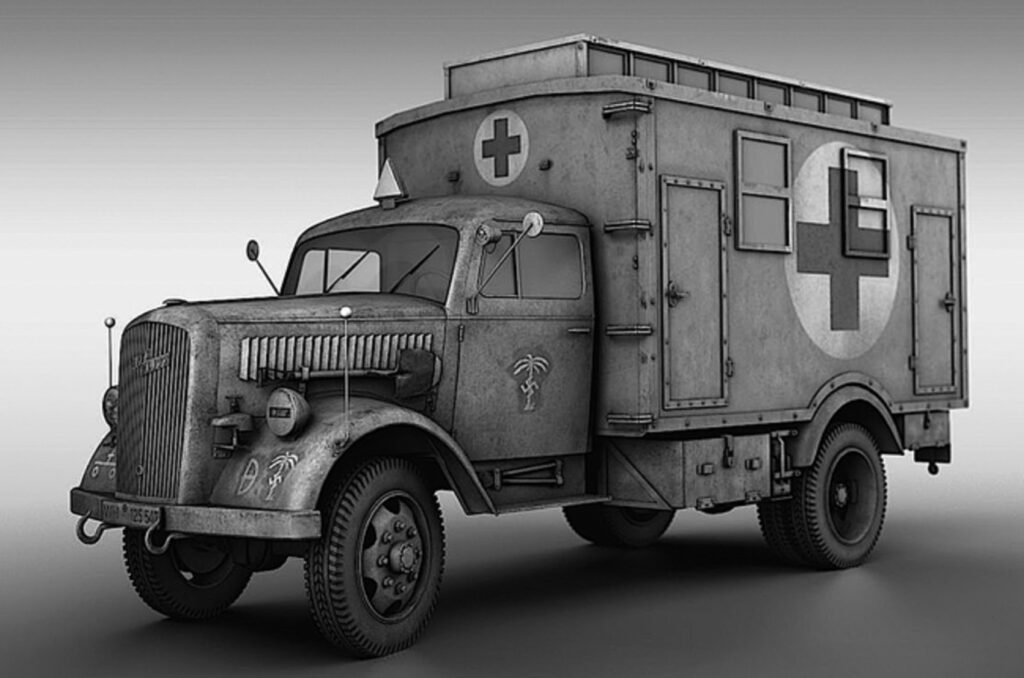
The Opel Blitz was the workhorse truck of the German Army. First delivered to the Wehrmacht in 1937, by the time bombing destroyed the factory in 1944, over 130,000 had been delivered. It could carry a payload of over 2.5 tons, travel up to 50 miles per hour, and had a range of over 200 miles. All this was accomplished with only a 74 hp engine. The truck was renowned for its hardiness and ease of repair.
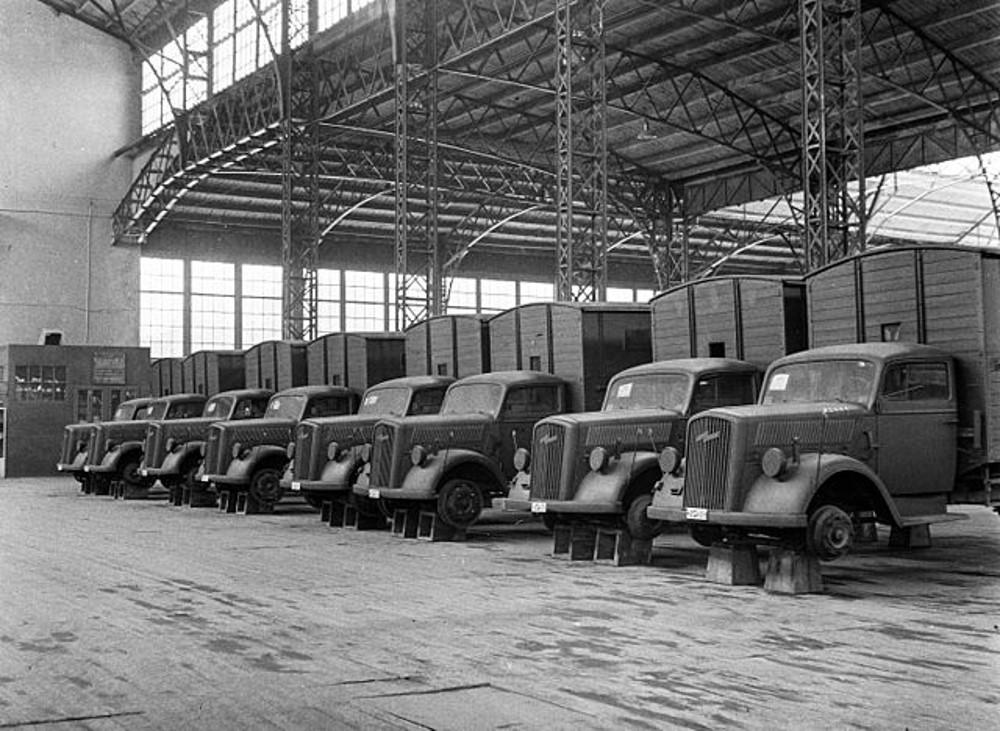
There were literally dozens of variants of what was officially named the Kfz 305. One of these was an ambulance version that definitely saw service with the Afrika Korps in Libya and Tunisia. As these were the most likely vehicles to escape destruction in combat, it seemed a good choice to be the truck Major Ray Hawkins can get his hands on.
All the color pictures here I took at the American Heritage Museum in Stow, Massachusetts. I highly recommend a visit there to see their excellent collection of military vehicles from many time periods, but especially World War II. They even let you drive a Sherman tank.
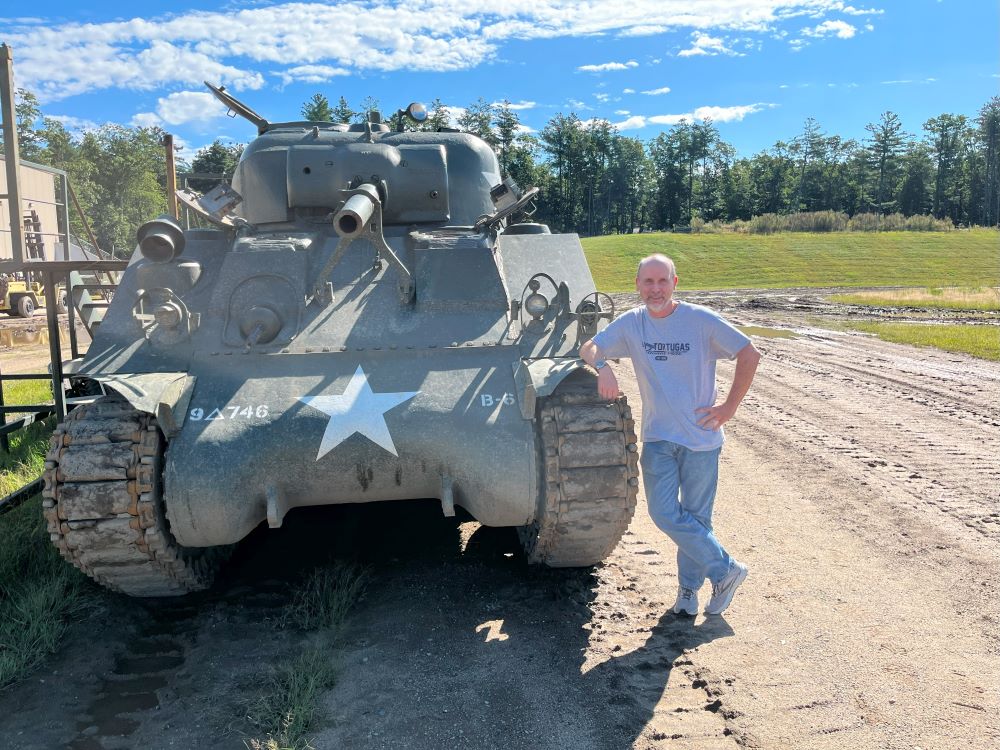
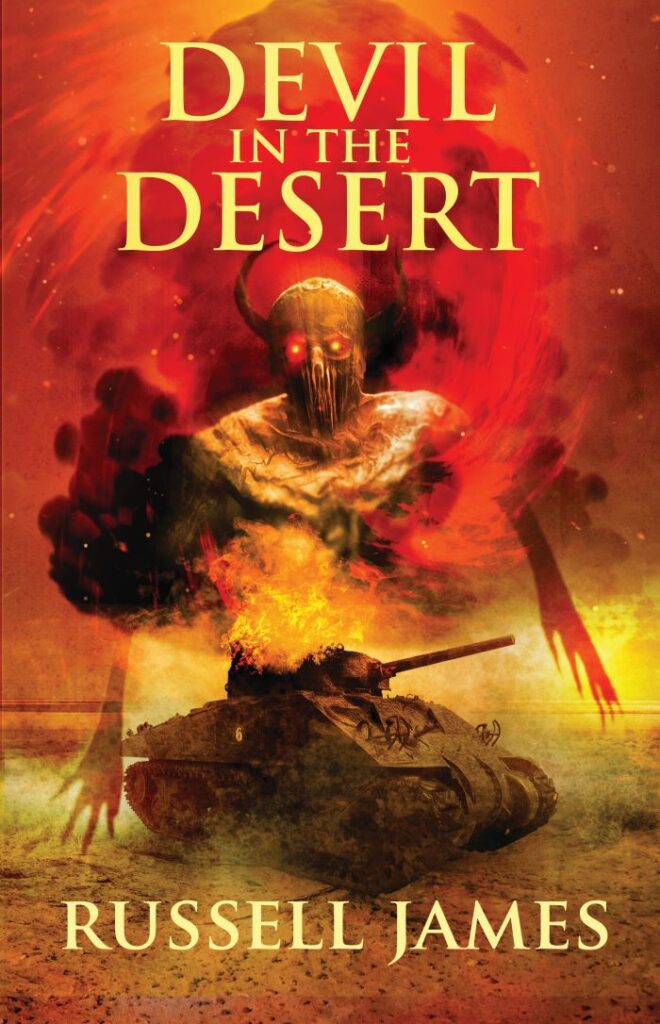
Those are a few of the vehicles mentioned in Devil in the Desert. I hope they matched what my descriptions planted in your mind’s eye.
If you haven’t gotten a copy of this WWII horror thriller yet, head over to Amazon and get yourself one today.

